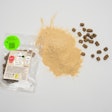

As pet food becomes increasingly specialized, with manufacturers catering to consumers’ desires to meet the individual needs of their pets, functional ingredients are becoming more of a trend than ever.
High omega-3 pet food formulas, for example, are purchased by 14 percent of dog owners and 10 percent of cat owners in the US, according to a March 2016 Packaged Facts report, "Pet food in the US." Roughly 11 percent of dog owners and 8 percent of cat owners purchase foods with high antioxidant claims, while 7 percent of dog owners and 6 percent of cat owners look for foods with probiotics/prebiotics.
What are functional ingredients?
Functional ingredients in pet foods are marketed as having special nutritional benefits in terms of general wellness or address specific health concerns such as digestion, joint and cartilage function, immune system strength or dental health. In a sense, all pet food is functional. For years there have been specialized pet food formulations by life stage, breed size and activity level, weight control, specific ingredient avoidance and other issues.
These functional pet food types echo the targeted marketing of functional foods for humans. Fueling this trend is America’s increasing attention to health issues, both human and pet, which ties in to an aging and often overweight population, again both human and pet.
"The same health-conscious Boomers and Millennials are driving the need for new innovative nutritional solutions for their beloved companion animals," Juan Gomez-Basauri, PhD, global director for companion animal nutrition with Alltech, told Petfood Industry. "As pet parents age, so do their pets, and we then see the same functional ingredients, like probiotics (Lactobacillus bacteria), prebiotic fibers (beta-glucans, manna oligosaccharides), nucleotides and omega-3 fatty acids (algae-sourced), applied to pet foods."
Industry opportunities
With such a wide range of options for catering to the need for functional ingredients in pet foods, how is the industry taking advantage of such an opportunity? Companies are individualizing their efforts, playing to their strengths and choosing ingredients that will best contribute to a complex market. New functional ingredient concepts come in two different ways: 1) through ideas on how to improve our pets' health, and 2) from novel ingredients introduced through suppliers and manufacturers.
The first way causes nutritionists to search constantly through the market and researchers to find novel ingredients that could achieve the target goals. This requires time and huge networking in order to find the proper solution. The second one is to be constantly in contact with ingredients suppliers and manufacturers and let them know that you are always open to novelties.


















